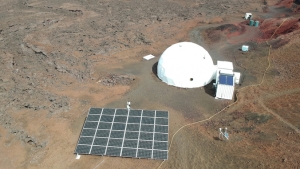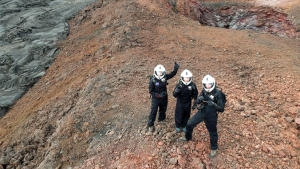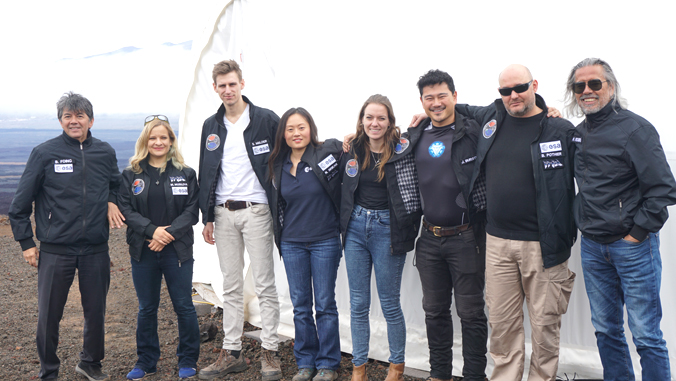A two-week mission to perform scientific experiments and test technological instruments needed for the future exploration of the Moon or Mars was successfully completed on March 6 at the University of Hawaiʻi at Mānoa’s Hawaiʻi Space Exploration Analog and Simulation (HI-SEAS) habitat on the slopes of Mauna Loa on Hawaiʻi Island.


The international crew finished all mission targets. This included geological mapping of the area for fresh pahoehoe (smooth) lava flows and lava tubes by geology students Annelotte Weert and Sebastian Mulder. The surface of the Moon and Mars is made up in great part of basaltic regolith material, similar to what the Hawaiian Islands are made of. Thus, study of the lava flows can help us understand how the weathering processes affect this kind of geology on Earth and what they would be like on other planetary bodies. Lava tubes could also be potentially used as shelters to build habitats on the Moon. The students used drone footage, IMAgery and 3D mapping to complement their research.
Nityaporn Sirikan, crew engineer and European Space Agency (ESA) systems engineer, completed work on enhancing the space suits and other technologies used at the HI-SEAS station. Her work will set a new standard for future missions at the station and feedback from the crew will allow for upgrades to be performed before another mission.
Other crew activities included a number of outreach and educational projects by crew anthropology researcher Benjamin Pothier, crew journalist Josh Burstein and crew commander Michaela Musilova.
UH Mānoa’s Musilova is also the chief investigator for HI-SEAS and the International Moonbase Alliance (IMA). She organized a Mission to Mars competition last year in Slovakia, which encouraged high school students in that country to design a research experiment to be performed during a simulated mission to the Moon or Mars. It involved collecting hair from the crewmembers, dissolving it and using it as fertilizer to grow plants on the Moon.
“All crew members actively participated in all mission research projects and duties. Collectively, we were able to complete the mission and all of our goals. I consider that to be a great success,” said Musilova “For me, personally, I was even more pleased by everyone’s can-do attitude and teamwork. We got along very well and together we made this mission fulfilling.”
The crew’s activities and research projects were monitored by researchers and engineers at the mission control center, based at the Blue Planet Research laboratory on Hawaiʻi Island that is owned by IMA founder Henk Rogers. Bernard Foing of ESA and executive director of International Lunar Exploration Working Group (ILEWG) was acting as the main space-crew communicator at the mission control center throughout the mission.
The mission is under the EuroMoonMars initiative, led by the ILEWG of ESA, in collaboration with the IMA, European Space Research and Technology Centre, Vrije Universiteit (VU) Amsterdam and HI-SEAS. It is part of a series of projects led by the IMA, which is planning on building a base on the Moon and a prototype moonbase on Hawaiʻi Island.
Musilova said, “Our future plans are to continue with similar missions, in terms of their length and the types of research projects. We are already working with ESA, ILEWG and VU on preparing another two missions later this year. One of our main goals is to get students and researchers from UH and the Pacific International Space Center for Exploration Systems engaged in our future missions. We are also working on proposals for future missions with the NASA’s Johnson Space Center, University of South Florida and companies such as SIFT and Ketone Technologies.”
Read previous HI-SEAS stories.


